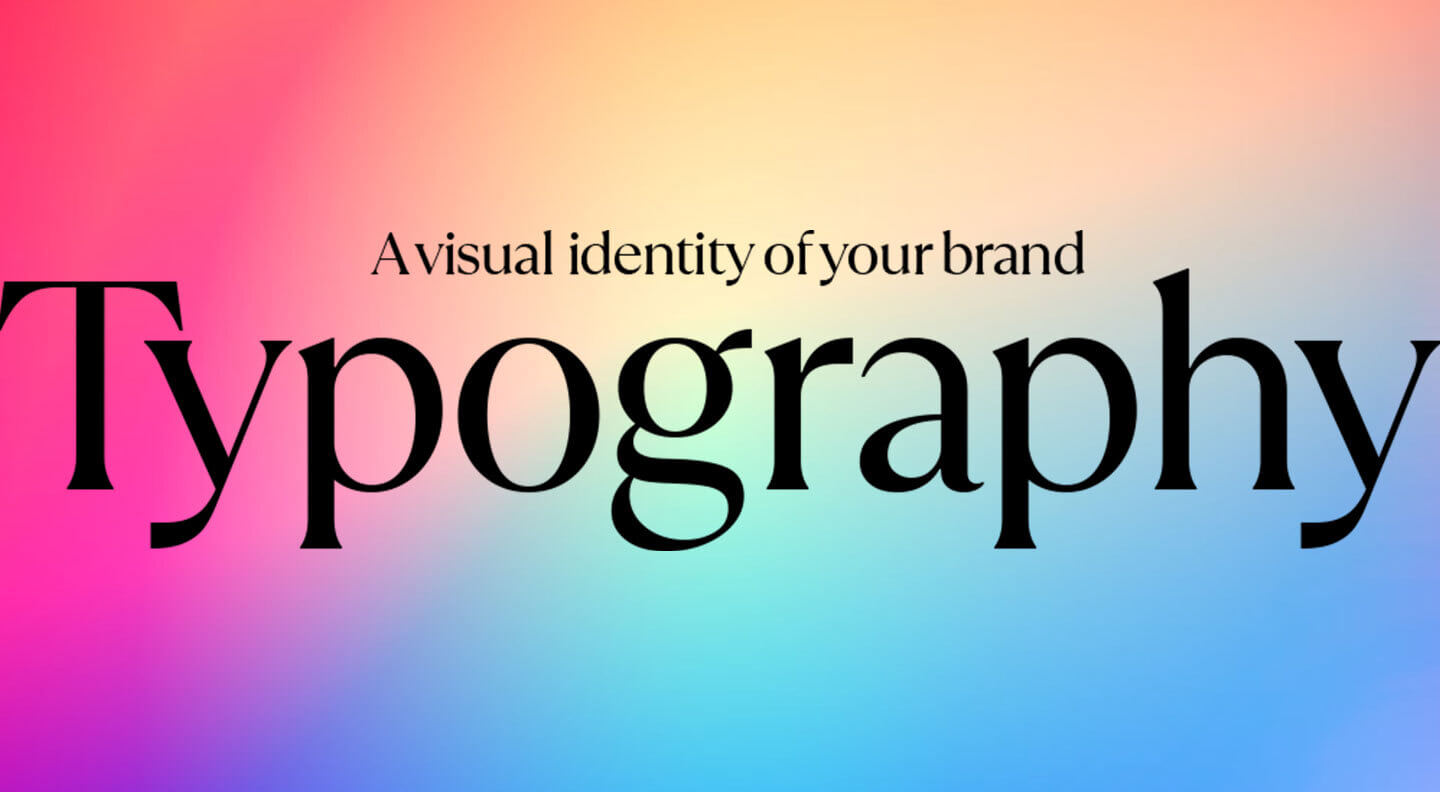Let's Talk
We would love to hear from you. Want to know more about our services or have any questions? Say Hi!
Typography: A visual identity of your brand

Typography is an art as old as the written word itself, intricately woven into the fabric of human history. It’s the delicate dance of letters and symbols, a symphony of design and communication. The history of typography takes us on a journey through time, showcasing the evolution of this essential art form. From the earliest scribes etching symbols on stone tablets to the digital fonts we use in our modern digital age, typography has left an indelible mark on the world of design, branding, and communication.
Typography, as we know it today, is the art and technique of arranging types to make written language legible and visually appealing. It involves the selection of fonts, spacing, and alignment to create a harmonious and aesthetically pleasing visual representation of words and ideas.
What is Typography?
Typography, at its core, is the art of designing and arranging text. It encompasses the selection of fonts, the arrangement of letters and characters, and the consideration of spacing and alignment to create visually appealing and effective text. It’s more than just picking a font; it’s about conveying meaning and emotion through the design of words.
Why Typography is Important?
Typography plays a pivotal role in the world of design and branding. Here’s why it’s so important:
Conveys Meaning Before the Words
The choice of fonts and how they are used can convey a message even before the words themselves. A bold, sans-serif font can exude strength and modernity, while a delicate script font might evoke elegance and sophistication. The right typography sets the stage for the message your brand wants to convey.
Changes Perceptions of Audience Towards the Brand
Typography has the power to change how people perceive your brand. A well-chosen font can make your brand appear trustworthy, playful, serious, or casual. It shapes the audience’s initial impression and influences their decision to engage with your content or products.
Sets the Mood of the Brand
Fonts can set the mood for your brand. Are you aiming for a nostalgic, vintage vibe? Or perhaps a futuristic and cutting-edge image? Typography can instantly transport your audience into the desired mood, making your brand memorable.
How Does Typography Impact Your Brand Identity?
Typography goes beyond mere aesthetics. It has a profound impact on your brand identity:
Sets the Tone for Your Brand
Your choice of typography sets the tone for your brand. A clean and modern font might signal efficiency and innovation, while a decorative, ornate typeface can signify tradition and elegance. The typography you select should align with your brand’s values and messaging.
Creates Brand Recognition
Consistency in typography is vital for brand recognition. A unique and well-defined typography style becomes a brand signature. Think of brands like Coca-Cola or Disney; their distinct fonts are instantly recognizable. Such consistency fosters trust and loyalty.
Enhances Readability
Effective typography enhances readability. Legible fonts, appropriate line spacing, and well-chosen sizes ensure that your audience can easily consume your content. In the digital age, where attention spans are fleeting, readability is crucial.
Reflects Your Brand’s Professionalism
Professionalism and credibility are often associated with well-executed typography. Sloppy font choices and poor typographic design can detract from your brand’s image. High-quality typography, on the other hand, reflects a commitment to excellence.
Towards The End
Typography is a cornerstone of design and branding. Its history is a testament to its enduring significance, while its present and future continue to shape how we perceive, communicate, and connect with the world around us. The fonts you choose, the way you arrange text, and the emotions you convey all play a vital role in creating a brand identity that leaves a lasting impression. Understanding and harnessing the power of typography is a crucial step in establishing and strengthening your brand’s presence in the modern world.
We at Litmus Branding meticulously consider three key elements: the consumer perspective, industry-specific nuances, and the established brand image. We harmoniously blend these factors to create a typographic identity that not only resonates with the intended audience but also maintains industry relevance and brand integrity. By doing so, we ensure that the typography not only speaks to consumers on a personal level but also remains consistent with the broader industry context, ultimately strengthening the brand’s visual identity and impact in the market.
Know More About Typography
What is Typography vs Font?
Typography refers to the overall design and arrangement of text, including factors such as font selection, spacing, and layout. It is the broader discipline that considers how different fonts work together harmoniously.
A font is a specific style and size of a typeface, such as Arial or Times New Roman. Essentially, typography is the art, and font is one of the tools used in that art.
What is Typography in a Logo?
Typography in a logo involves the use of carefully chosen fonts and text design to convey the brand’s personality and values. The typography in a logo is a crucial element that communicates a brand’s identity.
Is Typography a Design?
Yes, typography is a form of design. It is a key component of graphic design and involves the thoughtful arrangement of type to enhance the visual appeal and legibility of written language. Effective typography can evoke emotions, convey messages, and establish a visual hierarchy within a design. In essence, typography is a fundamental aspect of the overall design process.
Where is the Typography Used?
Typography is an important part of promotional material and advertising. It can be used in various contexts, some of which are:
- Print Materials: In newspapers, magazines, brochures, and posters.
- Digital Media: On websites, social media, and digital advertisements.
- Branding: In logos, business cards, and other brand collateral.
- Packaging: On product labels and packaging design.
- Signage: In signs, banners, and wayfinding systems.
- User Interfaces: In-app and website interfaces of the brand for optimal readability


